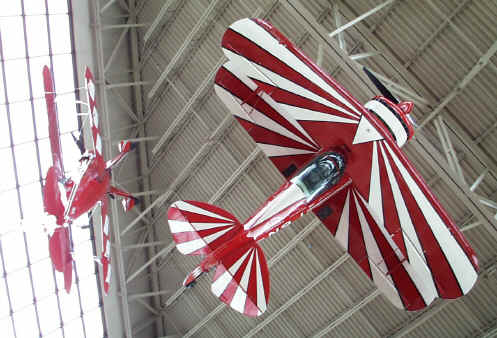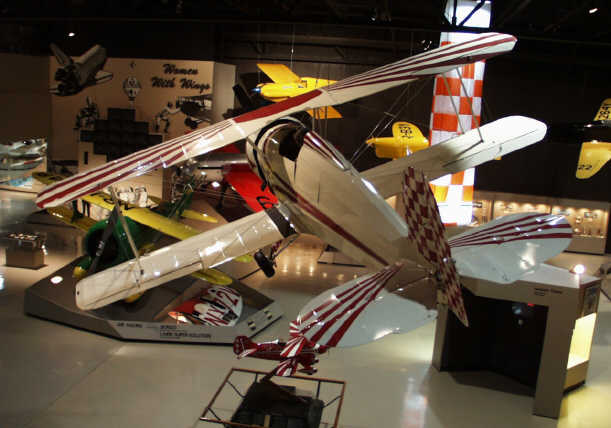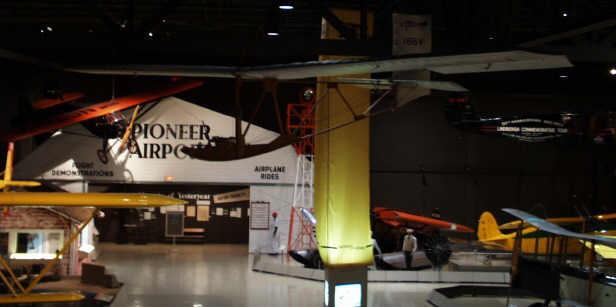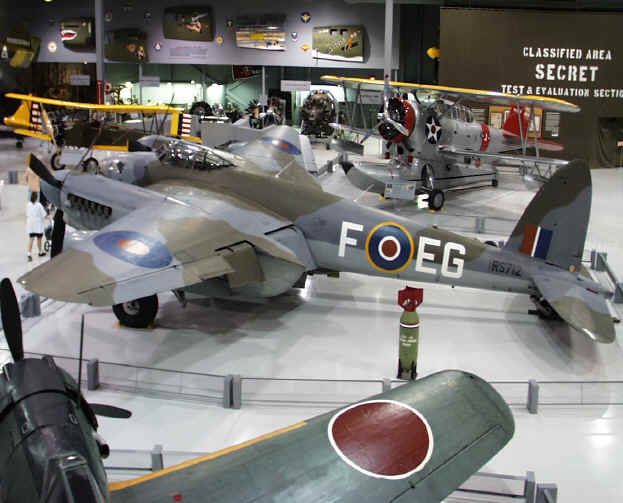As you drive in you can tell that the Experimental Aviation Association (EAA) AirVenture Museum is a class act. The grounds are quite large and the EAA has chosen to develop the grounds with landscaping, ponds, sculptures and memorials, and a few static displays. On the grounds are the main museum build, a grass runway, a row of hangars for the "Pioneer Airport" which houses historical aircraft and buildings, and a dorm for youth camps related to aviation.
The main museum building houses most of the homebuilt, all of the warbird and some of the antique/classic collection. The lobby immediately impresses with a high glass-enclosed gallery containing three Pitts Specials suspended in a starburst:

The main hall it built with a multi-level presentation, where visitors enter on the upper level and follow a zig-zag suspended walkway through the upper level of the hall, followed by a path back through on the lower level. Aircraft are hung and located on the floor, and the relatively low three-story height and darkened museum with spot lighting was a good mix of three-dimensionality and aircraft in flight while still maintaining good visibility for the suspended aircraft. Only a few were located so all that you could see of the airplane was the bottom. This is the aerobatic and air racing gallery from the upper walkway:

The biggest bummer I had with the displays was that the main display galleries were too dark for good photography with my limited-range digital camera. This is also from the upper gallery showing the classic and WWI aviation areas, with aircraft types such as a Cessna glider, a Fairchild 71, Fairchild 24, and a Monocoupe shown.

There is a large warbird hangar attached to the main gallery, which I thought was a good presentation but not as good as the main gallery. It included a Mosquito, Grumman Duck, Stinson L-5, Fleet PT-3, P-38, and others.

The docents were aggressive in grabbing visitors as they entered the main hall and they were extremely friendly and informative. I thought this was a great touch and set a welcoming tone to visitors who may not be very aviation savvy.
I also appreciated the richness of the exhibits. While all aviation related, there was a great mix of aircraft types and historical eras, as well as good backup material in print, interactive mockups and dioramas, models, and a few films. Besides the main gallery and the warbird hangar, there were a number of special galleries containing art and photography contest winners, old aviation magazine covers, and a gallery containing restorations in progress.
One thing that I thought was lacking was an summary exhibit of all the different parts of general aviation and the benefits that general aviation brings to the transportation system. I think this would be appropriate for this museum's themes and for the charter of the EAA.
Overall, plan on spending at least 4 hours at the EAA museum if you're at all interested in civil aviation. Very professional but accessible and captures the feel of general aviation.